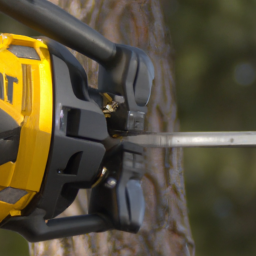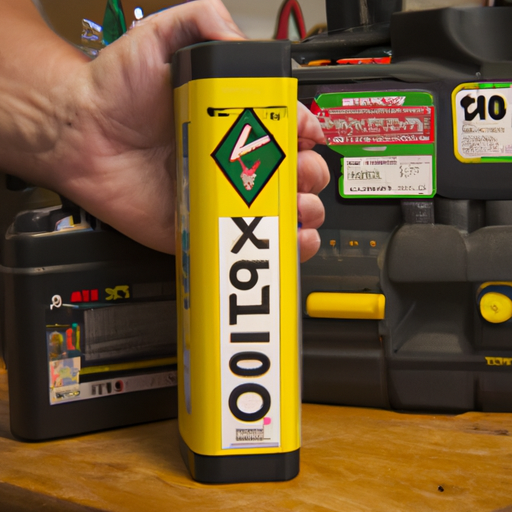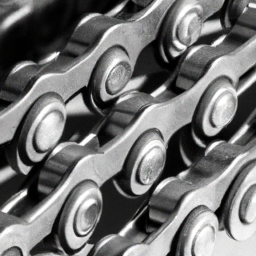You’ve probably come across a pole saw at some point, maybe in your parent’s garage or at a neighbor’s yard. But do you know what it’s actually used for? Well, a pole saw is a versatile tool that comes in handy for trimming branches in hard-to-reach areas. It’s like an extended arm with a saw attached to the end, allowing you to effortlessly trim overgrown branches without the need for a ladder or climbing a tree. Whether it’s for pruning trees in your backyard or maintaining a sprawling garden, a pole saw is the ultimate tool that makes tree maintenance a breeze.
What is a Pole Saw?
A pole saw is a specialized power tool that is designed to help with various outdoor tasks, particularly those involving trees, shrubs, hedges, and power lines. It is essentially a combination of a chainsaw and a long extension pole, allowing you to reach high branches without needing a ladder. This versatile tool is commonly used by homeowners, gardeners, and tree care professionals to trim tree branches, prune shrubs and hedges, clear overgrown vegetation, remove dead or diseased branches, harvest fruits and nuts, and maintain power lines.
Practical Uses of a Pole Saw
Trimming Tree Branches
One of the primary uses of a pole saw is trimming tree branches. Whether you have a few low-hanging branches that need some attention or you want to shape the canopy of a tall tree, a pole saw can make the task much easier. By extending your reach, you can safely and efficiently trim branches without the need for a ladder or climbing the tree. This not only saves time and effort but also minimizes the risk of accidents or injuries.
Pruning Shrubs and Hedges
Pruning shrubs and hedges is another practical use of a pole saw. With its long reach and sharp cutting blade, a pole saw allows you to trim and shape shrubs and hedges with precision. Whether you are maintaining a formal hedge in your garden or rejuvenating overgrown shrubs, a pole saw can help you achieve the desired shape and size without straining your arms or back.
Clearing Overgrown Vegetation
If you have an area on your property that has become overgrown with bushes, vines, or other vegetation, a pole saw can be a valuable tool for clearing it. The long reach of the pole saw enables you to reach into dense areas and cut back the overgrowth effectively. By clearing away the excess vegetation, you can improve the appearance of your yard, create space for new plants, and reduce the risk of pests and diseases.
Removing Dead or Diseased Branches
Dead or diseased branches not only detract from the aesthetic appeal of trees but can also pose safety hazards. With a pole saw, you can easily identify and remove these problem branches. By removing dead or diseased branches promptly, you can enhance the health and longevity of your trees, reduce the risk of falling debris, and prevent the spread of diseases to other parts of the tree.
Harvesting Fruits and Nuts
For those fortunate enough to have fruit or nut-bearing trees on their property, a pole saw can be an invaluable tool for harvesting. With its extended reach, a pole saw allows you to conveniently reach high branches and gather the ripe fruits or nuts without the need for a ladder. This makes the harvesting process safer and more efficient, ultimately ensuring a bountiful harvest.
Maintaining Power Lines
For professionals working in the field of electrical or utility maintenance, a pole saw is an essential tool for maintaining power lines. It allows workers to trim tree branches that might be interfering with power lines, reducing the risk of outages or electrical hazards. The extended reach of the pole saw also ensures that the workers can carry out their tasks safely from the ground, minimizing the need for climbing poles or using aerial lifts.
Benefits of Using a Pole Saw
Increased Reach
One of the most significant benefits of using a pole saw is the increased reach it provides. With the extension pole, you can effortlessly reach high branches or awkward areas without having to climb a ladder. This not only reduces the risk of falling or accidents but also allows you to work more efficiently, saving time and effort.
Enhanced Safety
Using a pole saw can significantly improve safety when working with trees or other tall vegetation. By eliminating the need to climb trees or use ladders, the risk of falls or accidents is greatly reduced. Additionally, with the ability to trim branches from a safe distance, you can minimize the chances of getting struck by falling debris. Overall, a pole saw promotes a safer work environment, both for you as the user and for those around you.
Versatility
Another advantage of using a pole saw is its versatility. Whether you need to trim branches, prune shrubs, clear overgrown vegetation, or harvest fruits, a pole saw can handle a wide range of outdoor tasks. With different blade types and adjustable extension poles, you can adapt the tool to suit your specific needs, making it a valuable addition to any gardener or homeowner’s toolkit.
Efficiency and Time-saving
Using a pole saw can greatly improve your efficiency and save you time when working on outdoor tasks. With its long reach and powerful cutting blade, it enables you to complete tasks quickly and effectively. Moreover, its lightweight design and ease of use make it a practical tool for both small, routine jobs and larger projects. By investing in a pole saw, you can maximize your productivity and spend more time enjoying your well-maintained outdoor spaces.
Types of Pole Saw Blades
When choosing a pole saw, it’s important to consider the type of blade that comes with it. Different blade types are designed for specific tasks and perform differently, so understanding their characteristics can help you make an informed decision.
Bypass Blades
Bypass blades are designed with a curved cutting edge and work similarly to pruning shears. They have a sharp and curved lower blade that cuts against a fixed, thicker upper blade. This design allows for clean and precise cuts, making bypass blades ideal for trimming live branches. The curved shape of the blade helps to guide the saw through the branch, minimizing splintering and damage to the tree.
Anvil Blades
Anvil blades feature a straight upper blade that closes against a softer lower anvil or slot. When a branch is cut, the lower blade presses against the anvil, which can crush the branch. Anvil blades are generally not recommended for live branches as they tend to produce rough cuts and can cause unnecessary damage to the tree. However, they excel at cutting through dead wood or larger branches.
Rip Blades
Rip blades have a straight cutting edge that works by sawing through the wood fibers rather than shearing them. They are primarily used for cutting larger branches or logs. Rip blades may not be as precise as bypass blades for trimming live branches, but they provide efficient cutting action for heavier-duty tasks.
Curved Blades
Curved blades are known for their versatility and ability to cut through both live and dead branches effectively. The curve helps to guide the blade through the wood, providing better control and reducing the likelihood of the blade getting stuck. Curved blades are a popular choice for general pruning and trimming tasks.
Serrated Blades
Serrated blades have a jagged or toothed cutting edge, similar to a saw. These blades are designed to cut through thicker branches or tough vegetation. Their serrated teeth grip the material, allowing for more efficient cutting. Serrated blades are especially useful for clearing overgrown vegetation or tackling tough pruning jobs.
Factors to Consider when Choosing a Pole Saw
When shopping for a pole saw, there are several factors to consider to ensure you choose the right tool for your needs. By taking these factors into account, you can make an informed decision and select a pole saw that will be both practical and safe to use.
Power Source
Pole saws are available in different power sources, including electric, battery-powered, and gas. Each power source has its advantages and disadvantages, so it’s essential to consider your specific needs and preferences. Electric pole saws are generally more lightweight and easier to use but require a nearby power source. Battery-powered pole saws offer greater flexibility but may have limited battery life. Gas-powered pole saws are the most powerful and suitable for heavy-duty tasks but can be heavier and require more maintenance.
Reach
The reach of a pole saw refers to the length of the extension pole. Consider the height of the branches you need to trim or the tasks you plan to undertake and choose a pole saw with an extension pole that provides the necessary reach. Keep in mind that longer extension poles may make the tool heavier and more challenging to maneuver.
Weight
The weight of the pole saw is an important consideration, especially if you anticipate using it for extended periods or have physical limitations. Lighter pole saws are generally easier to handle and maneuver, reducing fatigue and strain on your arms and back. However, heavier pole saws may offer more power and stability, particularly when tackling larger branches or more demanding tasks.
Safety Features
Safety should always be a top priority when selecting a pole saw. Look for models that come with useful safety features, such as a trigger lock for preventing accidental starts, a chain brake to stop the chain in case of kickback, and a shoulder strap or harness for improved stability and comfort. Additionally, some pole saws may have telescopic extension poles, which allow for easy adjustment and locking at desired lengths.
Blade Type
Consider the type of tasks you will be performing and choose a pole saw with a blade suited to those tasks. Bypass blades are ideal for trimming live branches, while anvil blades are better for cutting through dead wood. Rip blades are best for heavy-duty cutting, curved blades provide versatility, and serrated blades handle tougher materials.
Tips for Using a Pole Saw Safely
While pole saws are incredibly useful tools, it’s crucial to prioritize safety when using them. Follow these tips to ensure you use your pole saw safely and minimize the risk of accidents or injuries.
Wear Protective Gear
Before using a pole saw, make sure to wear appropriate protective gear. This includes safety glasses or goggles to protect your eyes from debris, earmuffs or earplugs to guard against excessive noise, gloves to provide grip and protect your hands, sturdy footwear with anti-slip soles, and a helmet or hard hat to protect your head from falling branches.
Inspect the Saw
Before each use, inspect the pole saw to ensure it is in good working condition. Check for any signs of damage or wear, such as loose or damaged parts, dull blades, or frayed cords. Make sure all bolts and nuts are securely fastened, and the chain is properly tensioned. If any issues are found, have them repaired or addressed before using the pole saw.
Confirmation of Desired Outcome
Before making any cuts, take a moment to assess the branches or vegetation you plan to trim or prune. Confirm the desired outcome and determine the appropriate cuts to make. Visualize the process and anticipate any potential hazards or challenges. This will help you work more efficiently and minimize the risk of mistakes or accidents.
Proper Technique
Learn and practice proper pole saw techniques to ensure safe and effective operation. Start by positioning yourself securely on a flat surface with a wide stance. Keep a firm grip on the pole saw, using both hands for better control. Use smooth and steady motions when making cuts, avoiding any sudden or jerky movements. Allow the blade to do the work and avoid forcing it through the wood, as this may increase the risk of kickback.
Weather Conditions
Take weather conditions into account before using a pole saw. Avoid operating the tool during strong winds or severe weather, as this can make the task more dangerous. Wet or slippery conditions can also affect your grip and balance, increasing the risk of accidents. If the weather is unfavorable, it’s best to wait for more suitable conditions before using the pole saw.
Avoid Power Lines
Always be aware of your surroundings and avoid using a pole saw near power lines. Accidentally contacting a power line can result in electrocution or other serious injuries. Maintain a safe distance from power lines and consider hiring a professional if any tree branches are in close proximity to electrical lines.
Maintaining and Caring for a Pole Saw
Proper maintenance and care are essential for keeping your pole saw in good working order and prolonging its lifespan. By regularly cleaning, lubricating, storing correctly, and sharpening the blade, you can ensure your pole saw remains reliable, efficient, and safe to use.
Cleaning and Lubrication
After each use, clean your pole saw to remove any sawdust, debris, or sap buildup. Use a soft brush or cloth to clean the blade, extension pole, and any other accessible parts. Remember to turn off the power and disconnect the battery or power cord before cleaning. Apply lubricating oil to the blade and chain to prevent rust and ensure smooth operation. Regular cleaning and lubrication will help maintain the cutting performance and overall condition of your pole saw.
Storage
When not in use, store your pole saw in a dry and secure location. Keep it away from moisture, extreme temperatures, and direct sunlight, as these can deteriorate the materials and affect the performance of the saw. If possible, disassemble the tool and store the parts separately to avoid any accidental activation or damage. Consider using a protective case or cover to further safeguard your pole saw during storage.
Blade Sharpening
Dull blades can make cutting more difficult and increase the risk of accidents. Regularly inspect the blades for any signs of dullness or damage. If necessary, sharpen the blades using the appropriate sharpening tool or take them to a professional sharpening service. Sharp blades ensure more efficient cutting and reduce the strain on the motor or engine of the pole saw.
Regular Inspections
Perform regular inspections of your pole saw to identify any potential issues or wear. Check for loose or damaged parts, worn cords or cables, loose bolts or nuts, and signs of excessive wear on the blade or extension pole. Address any problems promptly and have the saw serviced or repaired as needed. Regular inspections and maintenance help prevent unexpected breakdowns and promote safe operation.
Common Safety Hazards and Precautions
While using a pole saw, it’s important to be aware of common safety hazards and take appropriate precautions to avoid accidents or injuries. Some of the common safety hazards associated with using a pole saw include:
Kickback
Kickback occurs when the saw blade gets caught or pinched, causing the pole saw to jerk back suddenly towards the user. To prevent kickback, always maintain a firm grip on the pole saw, use the appropriate cutting technique, and avoid forcing the blade through the wood. Additionally, make sure the chain is well-tensioned and sharp, as a loose or dull chain can increase the likelihood of kickback.
Electrocution
Contacting a power line while using a pole saw can result in electrocution. Always maintain a safe distance from power lines and be cautious when working near them. If you suspect any branches are in close proximity to electrical lines, consult a professional tree care company or utility company for assistance.
Falling Branches
When trimming or pruning trees, there is the risk of falling branches. Always assess the condition of branches and prioritize safety when removing them. Ensure there is a clear path for falling branches and communicate with any bystanders to stay a safe distance away. Wearing a helmet or hard hat can provide additional protection against falling debris.
Injury from Ladders
One of the main benefits of a pole saw is that it eliminates the need for ladders when reaching high branches. Using ladders in combination with a pole saw can be dangerous, as it requires maintaining balance and stability at height. Avoid using ladders unless absolutely necessary and always prioritize safety by choosing a pole saw with sufficient reach.
Overexertion
Using a pole saw can be physically demanding, especially when working for extended periods or tackling large pruning projects. Take regular breaks to rest and hydrate to prevent overexertion. Listen to your body’s signals and avoid overworking yourself, as fatigue can increase the risk of accidents and injuries.
Common Mistakes to Avoid when Using a Pole Saw
To ensure the safe and effective use of a pole saw, it’s important to avoid common mistakes that can lead to accidents or damage to the tool. By being aware of these mistakes, you can work more efficiently and prolong the lifespan of your pole saw.
Using an Incorrect Blade
Using the wrong type of blade for the task at hand can affect the cutting performance and compromise your safety. Make sure to choose the appropriate blade type for the branches or vegetation you intend to cut. Refer to the manufacturer’s instructions or seek advice from professionals if you are unsure which blade to use.
Not Planning the Work
Failing to plan the work can result in poor execution and unnecessary risks. Take the time to assess the area, identify the branches or vegetation that need attention, and determine the safest and most efficient cutting methods. This planning will help you work more effectively, minimize mistakes, and prevent accidents.
Neglecting Safety Gear
Using a pole saw without wearing proper protective gear significantly increases the risk of injuries. Always put on safety glasses or goggles, gloves, ear protection, sturdy footwear, and a helmet or hard hat before operating the pole saw. This gear helps protect you from flying debris, excessive noise, and accidental contact with branches or the saw itself.
Improper Handling
Improper handling of a pole saw can lead to accidents or damage to the tool. Be sure to hold the pole saw firmly with both hands, maintaining a solid grip throughout each cut. Avoid twisting or jerking motions that may cause loss of control or kickback. Practice proper pole saw technique and seek guidance or training if needed.
Ignoring Maintenance
Regular maintenance is crucial to keep your pole saw in optimal condition. Neglecting maintenance tasks, such as cleaning, lubricating, and blade sharpening, can result in decreased cutting performance and increased risk of accidents. Follow the manufacturer’s maintenance instructions and establish a routine for inspecting and caring for your pole saw.
Conclusion
A pole saw is a versatile tool that can make various outdoor tasks much easier and more efficient. Whether you need to trim tree branches, prune shrubs, clear overgrown vegetation, or harvest fruits, a pole saw provides the reach and cutting power to get the job done. By using a pole saw, you can increase your productivity, maintain a safe working environment, and achieve excellent results. Remember to prioritize safety by wearing appropriate protective gear, following proper techniques, and regularly maintaining your pole saw. With its combination of safety and efficiency, a pole saw is truly a valuable addition to any outdoor toolkit.



